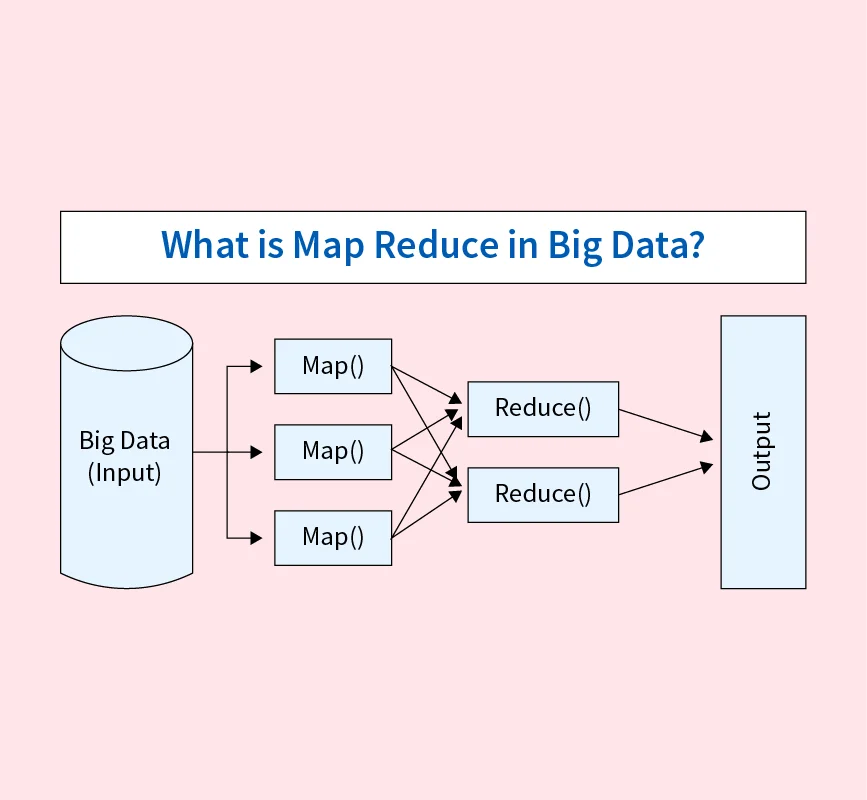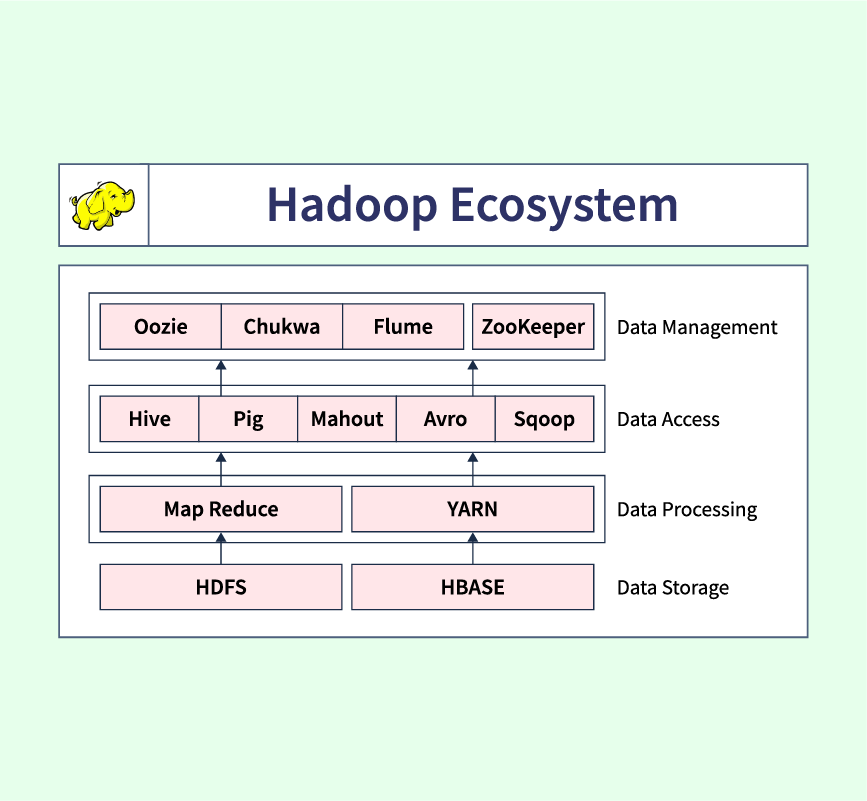Big data analytics involves analyzing vast, complex datasets to uncover patterns, trends, and insights. In today’s data-driven world, businesses and organizations rely on big data analytics to make informed decisions, enhance efficiency, and gain a competitive edge. It has become a cornerstone of innovation across industries.
What is Big Data Analytics?
Big data analytics refers to the process of examining large and complex datasets—often characterized by their volume, velocity, and variety—to uncover meaningful patterns, trends, and insights. It involves advanced techniques such as machine learning, data mining, and predictive modeling to analyze data beyond the capabilities of traditional data-processing tools.
“Big data” typically includes datasets so vast that conventional software cannot efficiently process them. These datasets often require distributed computing frameworks and specialized tools to handle their size and complexity. Examples include structured data like financial transactions, semi-structured data like social media posts, and unstructured data like video content.
Big data analytics differs from traditional data analysis in its focus on handling massive, dynamic datasets in real-time. While traditional methods rely on sampled data, big data analytics enables comprehensive, data-driven decisions by analyzing entire datasets. This transformative approach is vital for industries where quick and accurate insights can create significant advantages.
Why is Big Data Analytics Important?
Big data analytics plays a pivotal role in enhancing decision-making and driving innovation. It allows businesses to derive actionable insights, predict trends, and improve operational efficiency by leveraging vast volumes of data.
In healthcare, big data analytics aids in predictive diagnostics and personalized treatments. In finance, it helps detect fraud and assess risks. Retailers use it to optimize supply chains and provide personalized shopping experiences. These use cases highlight the transformative potential of big data analytics across sectors.
By harnessing big data analytics, organizations gain a competitive edge through data-driven strategies. For instance, predictive maintenance powered by big data analytics reduces operational downtime, and customer behavior analysis boosts sales through targeted marketing campaigns. Its ability to turn raw data into strategic assets makes it indispensable in the modern digital landscape.
How Does Big Data Analytics Work?
Big data analytics involves a systematic process of extracting actionable insights from massive and complex datasets. This process is powered by advanced tools and frameworks designed to manage the 3Vs of big data: volume, velocity, and variety. Below are the key steps involved:
Data Collection and Storage
Data is gathered from diverse sources such as sensors, social media, transactions, and logs. These vast datasets are stored in distributed storage systems like Hadoop Distributed File System (HDFS) or cloud-based platforms, ensuring scalability and accessibility.
Data Processing
Once collected, data undergoes processing using tools like Apache Spark or MapReduce. These tools handle data transformation, aggregation, and preparation to ensure it is ready for analysis. Processing large datasets efficiently is critical to ensure real-time or near-real-time insights.
Data Scrubbing (Cleansing)
Data scrubbing involves cleaning the dataset to remove inconsistencies, duplicates, and inaccuracies. This step improves data quality and reliability, ensuring that the analytics results are accurate and meaningful.
Data Analysis
Advanced techniques like machine learning, data mining, and statistical modeling are applied to identify patterns, correlations, and trends. Tools such as SAS, R, and Python are commonly used for this step, depending on the analytical needs.
Visualization and Reporting
The final step involves presenting insights in an understandable format through dashboards, charts, and graphs. Visualization tools like Tableau or Power BI help stakeholders interpret data effectively and make informed decisions.
The 5 V’s of Big Data Analytics
Big data analytics is characterized by five defining aspects, commonly referred to as the “Five V’s.” These dimensions explain the complexity and importance of big data in modern analytics.
1. Volume
Volume refers to the massive amount of data generated every second from various sources like social media, IoT devices, and transactions. For example, platforms like YouTube generate terabytes of video data daily, requiring robust systems to store and analyze.
2. Velocity
Velocity deals with the speed at which data is generated, processed, and analyzed. For instance, stock market platforms need real-time analytics to provide instant insights on trading trends, ensuring decisions are made promptly.
3. Variety
Variety encompasses the diverse types of data available, including structured, semi-structured, and unstructured formats. Examples include text, images, videos, and sensor data, highlighting the need for flexible tools capable of handling all formats.
4. Veracity
Veracity focuses on the accuracy and trustworthiness of the data. Poor-quality data can lead to misleading analytics. For instance, businesses must filter fake reviews on e-commerce platforms to ensure reliable consumer insights.
5. Value
Value represents the actionable insights derived from big data analytics. Without generating tangible outcomes, data remains a liability rather than an asset. For example, retailers use analytics to predict consumer trends, enhancing product recommendations and sales strategies.
Types of Big Data Analytics
Big data analytics can be categorized into four main types, each serving a distinct purpose and offering unique insights to organizations.
1. Descriptive Analytics
Descriptive analytics focuses on summarizing past data to understand what has happened. It uses tools like dashboards and reports to track metrics and trends.
Example Use Cases: Tracking website traffic over time, sales performance analysis, and monitoring social media engagement metrics.
2. Diagnostic Analytics
Diagnostic analytics aims to uncover the root causes of past events by identifying patterns and correlations. It answers the “why” behind outcomes.
Example Use Cases: Analyzing why a marketing campaign underperformed or determining the factors contributing to product defects.
3. Predictive Analytics
Predictive analytics uses statistical models and machine learning techniques to forecast future trends and behaviors. It helps organizations anticipate outcomes.
Example Use Cases: Predicting customer churn, forecasting stock prices, and identifying future product demands.
4. Prescriptive Analytics
Prescriptive analytics goes a step further by recommending specific actions based on predictive insights. It helps businesses decide the best course of action.
Example Use Cases: Optimizing supply chain logistics, personalizing marketing campaigns, and managing inventory effectively.
Big Data Analytics Tools and Technologies
Big data analytics relies on a range of tools and technologies designed for different stages of the analytics process. These tools ensure efficient data collection, processing, cleansing, analysis, and visualization.
Collection and Storage
These tools manage large-scale data storage and retrieval.
- Hadoop: A distributed storage system that handles large data sets across multiple nodes.
- Apache Cassandra: A scalable database optimized for high-speed data writes and reads.
Use Cases: Storing customer behavior logs, IoT sensor data, and social media feeds.
Processing
Processing tools are responsible for handling and transforming raw data into actionable insights.
- Apache Spark: Known for its speed and ease of use in distributed data processing.
- Apache Flink: Ideal for real-time stream processing and advanced analytics.
Use Cases: Real-time fraud detection and analyzing live e-commerce transactions.
Scrubbing and Cleansing
These tools ensure data quality by removing inconsistencies and errors.
- Trifacta: A user-friendly platform for data wrangling and transformation.
- Talend: An open-source tool for integrating, cleansing, and enriching data.
Use Cases: Cleaning healthcare patient records or financial transaction logs.
Analysis and Visualization
Analysis and visualization tools convert processed data into meaningful insights.
- Tableau: Known for its intuitive dashboards and interactive visualizations.
- Power BI: A versatile tool for creating reports and sharing insights across teams.
Use Cases: Business performance analysis and predictive sales modeling.
Benefits of Big Data Analytics
Big data analytics offers transformative advantages across industries, helping organizations leverage data for growth and innovation.
Improved Decision-Making
Analytics enables businesses to base decisions on actionable insights rather than intuition.
Example: Retailers use big data to optimize inventory and pricing strategies based on customer behavior.
Enhanced Operational Efficiency
By analyzing workflows and identifying bottlenecks, organizations can improve efficiency.
Example: Logistics companies leverage big data to streamline routes and reduce fuel costs.
Identification of New Opportunities and Risks
Big data analytics uncovers trends and opportunities that might otherwise go unnoticed.
Example: Healthcare providers use predictive analytics to identify at-risk patients and recommend preventive care.
Real-World Benefits
- Finance: Fraud detection systems monitor transactions in real time.
- Manufacturing: Predictive maintenance minimizes equipment downtime.
- Marketing: Personalized campaigns boost customer engagement and sales.
Big data analytics empowers businesses to adapt to dynamic markets, remain competitive, and innovate effectively.
Challenges of Big Data Analytics
Despite its benefits, big data analytics poses several challenges that organizations must address.
Data Privacy and Security Issues
Handling sensitive data raises concerns about compliance with regulations like GDPR.
Example: Data breaches in healthcare systems expose patient information to misuse.
High Costs of Infrastructure and Tools
Implementing big data systems requires significant investment in hardware, software, and skilled personnel.
Example: Startups may find it difficult to afford enterprise-level analytics platforms.
Complexity of Implementation and Skill Requirements
Organizations often face challenges in integrating analytics into existing workflows and training staff.
Example: Employing data scientists and analysts to manage complex algorithms can be resource-intensive.
Careers in Big Data Analytics
The field of big data analytics offers a variety of exciting career opportunities for individuals with analytical skills and a knack for problem-solving.
Key Roles
- Data Scientist: Develops machine learning models and advanced analytics.
- Data Analyst: Focuses on interpreting data trends and presenting insights.
- Big Data Engineer: Builds and maintains the architecture required for big data processing.
Required Skills and Qualifications
- Technical Skills: Proficiency in programming (Python, R), big data tools (Hadoop, Spark), and SQL.
- Analytical Skills: Strong ability to analyze and interpret data trends.
- Educational Background: Degrees in computer science, data science, or related fields.
Emerging Opportunities
- Artificial Intelligence: Leveraging big data for AI model development.
- IoT Analytics: Processing data from interconnected devices.
- Sustainability Analytics: Using big data to drive eco-friendly solutions.
As businesses continue to rely on data-driven strategies, the demand for skilled professionals in big data analytics is growing exponentially.
Conclusion
Big data analytics has become a cornerstone of innovation and decision-making across industries. Its ability to uncover insights and drive efficiency has made it indispensable in today’s digital landscape. For businesses, embracing big data analytics can unlock unprecedented growth, while individuals with the right skills can capitalize on a wealth of career opportunities in this transformative field.
References:


